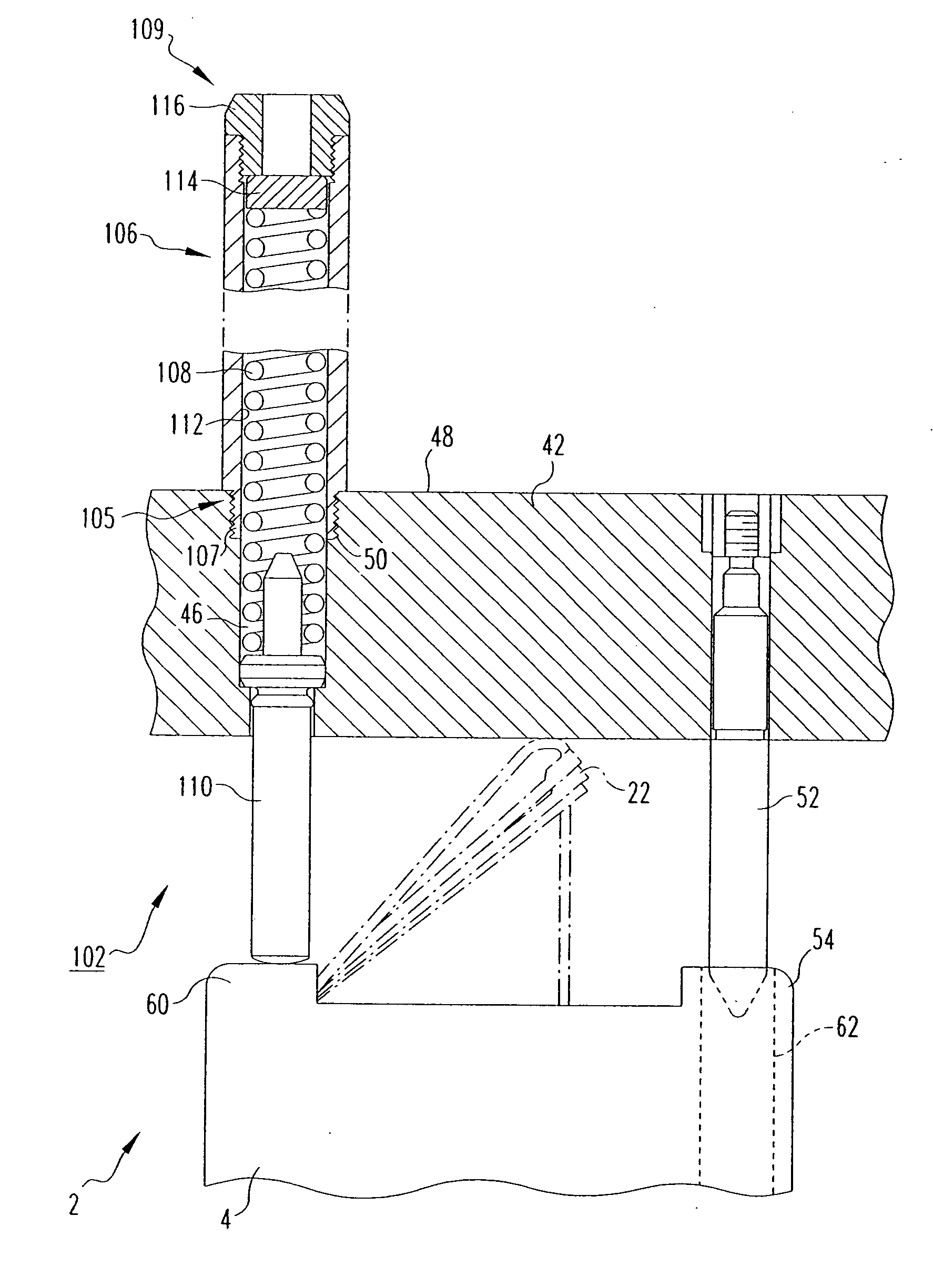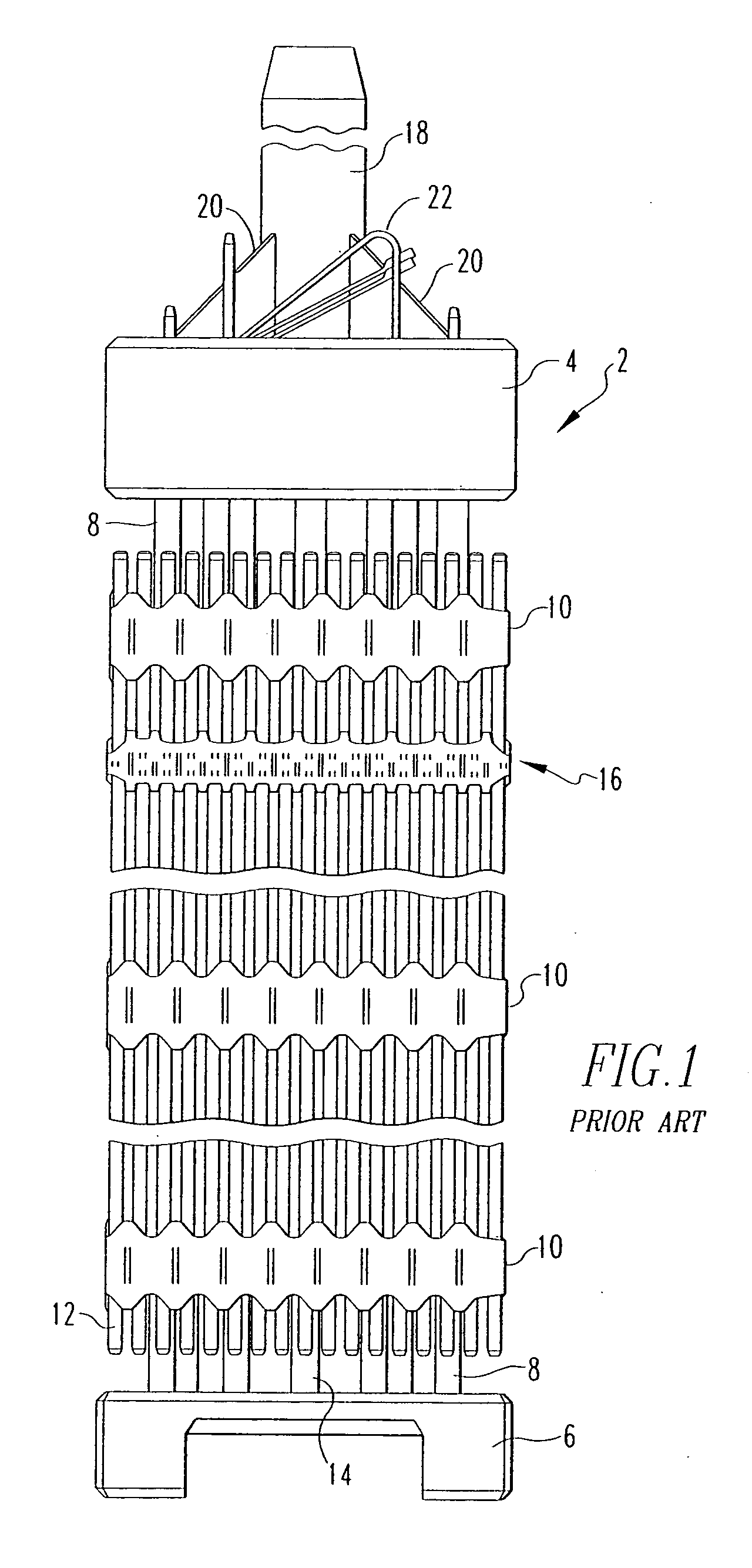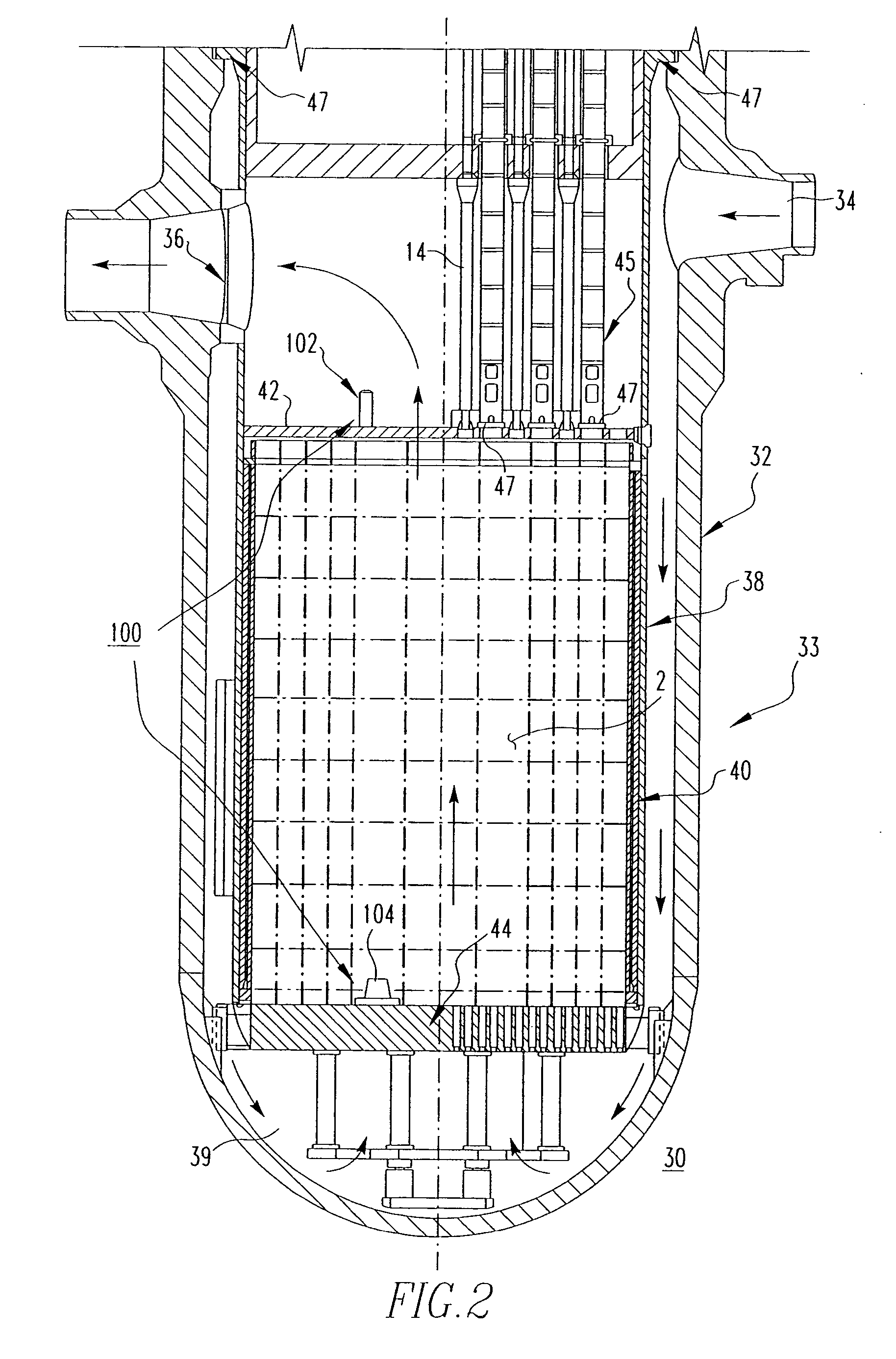In-core fuel restraint assembly
a fuel assembly and restraint technology, applied in the field of fuel assemblies, can solve the problems of high amount of column bowing of fuel elements, damage to fuel assembly elements, and partial control rod insertion, so as to improve the resistance to lifting and vibration, reduce harmful compressive forces, and superior restraint of fuel assembly
- Summary
- Abstract
- Description
- Claims
- Application Information
AI Technical Summary
Benefits of technology
Problems solved by technology
Method used
Image
Examples
example
[0039] By way of a representative example, which will be used for illustrative purposes herein throughout, and which is not limiting upon the scope of the invention, Westinghouse Electrical Company LLC has a known core design which is commercially available under the designation AP-1000. Westinghouse Electric Company LLC has a place of business in Monroeville, Pa. The AP-1000 design includes 157 fuel assemblies 2. Therefore, in accordance with the aforementioned restraint assembly 100 of the invention, two spring packs 102 would be employed at each fuel assembly 2 location in the core 30, for a total of 314 spring packs 102.
[0040] As previously discussed, the push rod 110 of each spring pack 102 engages and provides a compressive force at a corner (see, for example, corner 60 of fuel assembly top nozzle 4 of FIG. 3) of the fuel assembly top nozzle 4. More specifically, as shown in FIG. 3, in the AP-1000 Example, the push rod 110 of spring pack 102 engages corner 60 of the top nozzl...
PUM
 Login to View More
Login to View More Abstract
Description
Claims
Application Information
 Login to View More
Login to View More - R&D
- Intellectual Property
- Life Sciences
- Materials
- Tech Scout
- Unparalleled Data Quality
- Higher Quality Content
- 60% Fewer Hallucinations
Browse by: Latest US Patents, China's latest patents, Technical Efficacy Thesaurus, Application Domain, Technology Topic, Popular Technical Reports.
© 2025 PatSnap. All rights reserved.Legal|Privacy policy|Modern Slavery Act Transparency Statement|Sitemap|About US| Contact US: help@patsnap.com



